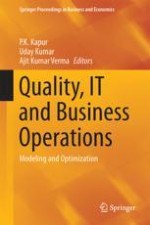2018 | OriginalPaper | Buchkapitel
When to Start Remanufacturing Using Adopter Categorization
verfasst von : Nitin Sachdeva, P. K. Kapur, Ompal Singh
Erschienen in: Quality, IT and Business Operations
Verlag: Springer Singapore
Aktivieren Sie unsere intelligente Suche, um passende Fachinhalte oder Patente zu finden.
Wählen Sie Textabschnitte aus um mit Künstlicher Intelligenz passenden Patente zu finden. powered by
Markieren Sie Textabschnitte, um KI-gestützt weitere passende Inhalte zu finden. powered by
